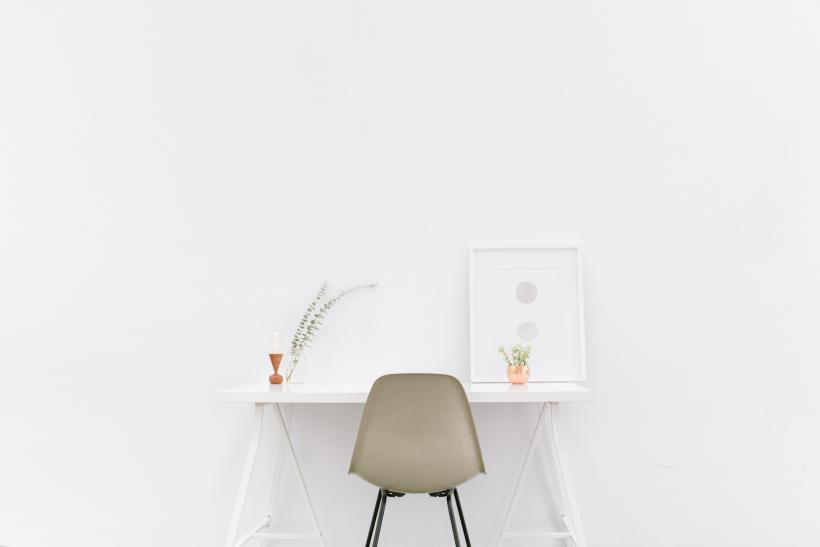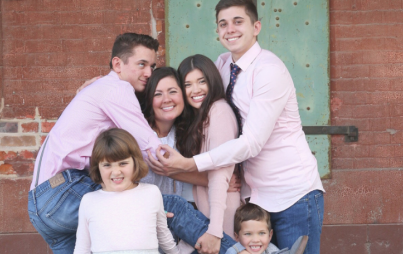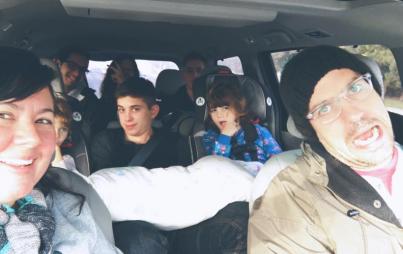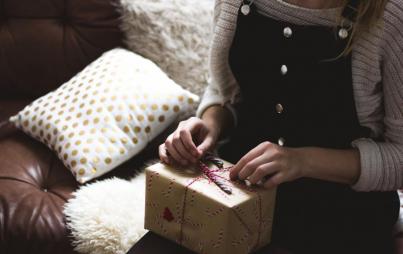
Photo by Bench Accounting on Unsplash
As I left my husband’s isolation room, I peeled off the gauzy gown — the color of my favorite lemon-custard ice cream — and stuffed it in the trash. I was sweating; it was always too warm in the hospital. But it was February and chilly outside for California. I grabbed my teal down vest from the utilitarian hooks by the cart of disposable gloves, masks, gowns. I wished I still had my red vest but had gotten got rid of it a while ago, when, like seemingly everyone else, I was seized by the iron grip of magical tidying according to the gospel of Marie Kondo's The Magical Power of Tidying Up.
Then I wished I had the black and gray lightweight cashmere baseball-sleeved sweater, the long blousy Ella Moss sheer top that came with a built-in camisole, the jeans I donated when they were a little too big, or the denim-look Banana Republic trench coat lined with fabric printed with maps of New York.
In fairness, all those items had flaws, even the vest — a cheap one from Target. The red was a little too dark. It had stains. It wasn’t down. It made my cheeks look extra pink in photos. But l liked it. Still, the vest was tossed in my KonMari fervor.
For several weeks, on any given day you would have found me flipping through Marie Kondo’s soothing aqua-colored book or aggregating all my pants, vases, and bars of soap into vast piles. According to Kondo’s method, if you take each object you own in your hand and ask whether it sparks joy, you will know instinctively whether it is the right possession for you. Naturally, using Kondo’s method, I got rid of a lot of useless shit. Piles and bags and boxes disappeared, swept out of my house on a tidal tidying wave.
It’s no accident that tidying starts with clothes: our external armor, a projection of the person we’d like to be. When we get rid of clothes because they no longer fit our lives or our bodies, we both accept and reject change, forgetting that bodies — and our lives — may change again.
Kondo has you start with clothes. The first piles, heaped in my bedroom, saw me gleaning vintage dresses and belts, blouses that didn’t quite fit right, shoes I rarely wore, sweaters, pilled T-shirts, mismatched socks, old underwear, inconvenient purses, and a royal blue tunic with a weird hem that refused to lie flat. I spread accessories out on my bed and let kids who were over to play with my daughter choose whatever they wanted to take home.
I bagged up the rest — seven garbage bags of clothes — and took it all to a thrift store. Then I re-folded all the remaining clothes using Marie Kondo’s folding method, fitting them perfectly into organized drawers. I drew the line at thanking my socks for their service (I rarely even wear socks) or talking to and emptying my purse daily, but I felt I’d succeeded at her method.
Next, I hauled all my books to the living room. This was a lot of work; I spent most of my twenties in grad school. I live in a three-story house; most of my books were in the basement, but I wanted to shelve them in my bedroom. I piled them all up and sorted without mercy, lifting each one and holding it in my hand and asking myself whether it sparked joy — or, really, whether I would ever reread it.
You Might Also Like: Why Am I Keeping All Of This Sh*t? A Case For Decluttering
When I was 18, I worked in a book return warehouse, packing up box after box of forlorn, unloved, unsold books to send back to the publishers. The job was terrible, but I learned the skill of packing books efficiently into boxes. I used it once more to box up years’ worth of grad-school paperbacks, some stray college textbooks, old books of my grandparents’, the former must-reads of summers past, and two-thirds of my extensive cookbook collection. For my effort, I got a used-bookstore credit for $60, which I still haven’t spent.
For several weeks I was delighted by the magical results. I gazed in adoration at beautifully folded clothing neatly nestled in drawers. I cast satisfied glances at orderly books alphabetized on the shelves above my beautifully arrayed, spare lineup of clothes. I spoke of tidying with evangelical fervor to friends and relatives. I lent out the book, not expecting its return.
Why hang onto clutter that would detract from my newfound serenity?
A few weeks after this purge, my husband was diagnosed with a rare, aggressive cancer. The years since have been full of many downs, including his near death from the complications of a stem cell transplant, and some ups, such as his recent remission. I’ve been living daily with uncertainty, unfamiliarity, and fear. However magical, tidying can’t make that fear disappear.
It’s no accident that tidying starts with clothes: our external armor, a projection of the person we’d like to be. When we get rid of clothes because they no longer fit our lives or our bodies, we both accept and reject change, forgetting that bodies — and our lives — may change again.
Readers of the book will remember that Kondo prescribes a strict order, beginning with clothes and ending with letters, mementos, and photographs. Once that is done, Kondo claims, you will reach peace with your belongings. I didn’t make it to going through old photos and letters before my husband was diagnosed, and I’m thankful. What if I’d thrown out his old letters? What if I’d let go of photos of happier times with the friends who have rallied around me? Or old birthday cards from my late mother, whose support I dearly missed during my husband’s cancer?
It turned out that along with useless junk, I also got rid of plenty of useful things, like the vintage cream-colored braided belt that would have gone perfectly with an easy coral-colored summer dress. (My daughter’s best friend snapped it up in the big accessories purge.) Although I’ve wished I could get that belt back, I missed the comfort I threw away even more. I had divested myself of the familiar just before I entered a season of my life when that was exactly what I needed.
That’s one of the problems with one-size-fits-all, prescriptive how-to books; their glib assumptions that what has worked for the author — and, in Kondo’s case, those who sought and paid for her organizing services — will work for everyone.
I’m not arguing for hoarding. I dislike clutter. I give away my children’s outgrown clothes, and in times of stress, a messy house makes me more anxious. But paring possessions down to the bone can cut too deep for tender times. Sometimes, sparking joy is not a good test because joy is not a reasonable or possible aim. Surviving is. And surviving, for me, feels easier when I’m surrounded by the familiar.
The world of illness, the world of the hospital, is a disposable, ever-changing world. That gauzy yellow hospital gown I had to wear as a visitor was not precious. The thin stretchy hospital gloves that stuck to and peeled from my hands were not precious. But throwing out these things, every day, reminded me of the impermanence of what we have and what we know. If, when I decluttered, I had known I would be throwing away so many hospital gowns one day, with all that gesture implies, I would never so carelessly have cast aside my red vest along with all the other trappings of my ordinary, dull, unremarkable, beloved, irrecoverable life.








